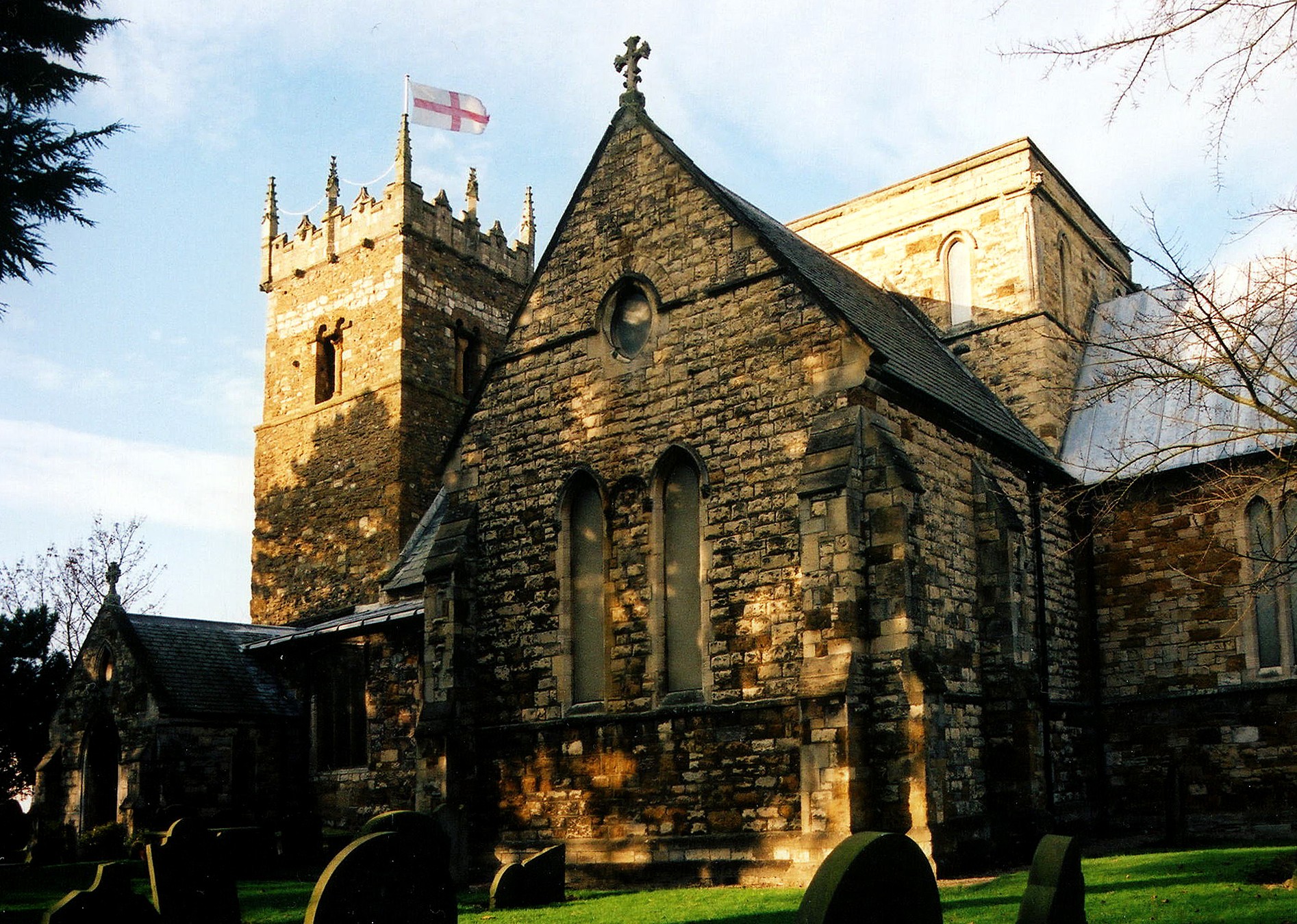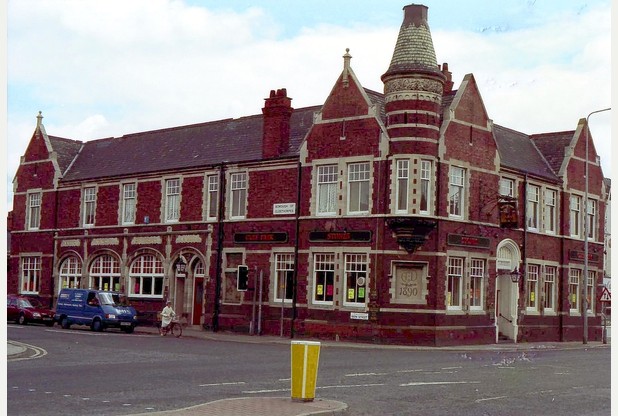Hide
Cleethorpes
hide
Hide
hide
Hide
hide
Hide
Hide
Cleethorpes, coast township and vil. with ry. terminus, Clee par., N. Lincolnshire, 2¼ miles SE. of Great Grimsby, 1,043 ac., pop. 2,840; P.O., T.O., called Cleethorpe; a fine watering-place, prettily situated on a flat sandy beach at the mouth of the Humber, which is here about 7 miles wide.
From: John BARTHOLOMEW's "Gazetteer of the British Isles (1887)"
Hide
The Grimsby Library is an excellent resource with both a Local History section and a Family History section.
- The Clee Burial Board was established in 1877 and a cemetery of eight acres was established that same year on Beacon Avenue. A potion of the cemetery was reserved for Catholics.
- A War Cross has been erected on an island site in the main drive.
- The parish was in the Grimsby sub-district of the Caistor Registration District.
- In 1890, the parish was allocated to the Grimsby sub-district of the new Grimsby Registration District.
- Check our Census Resource page for county-wide resources.
- The table below gives census piece numbers, where known:
| Census Year | Piece No. |
|---|---|
| 1861 | R.G. 9 / 2390 |
| 1871 | R.G. 10 / 3415 |
| 1881 | R.G. 11 / 3272 |
| 1891 | R.G. 12 / 2616 - 2619 |
| 1901 | R.G. 13 / 3095 |
| Trinity Road, Cleethorpes, Cemetery |
| Corpus Christi, Cleethorpes, Roman Catholic |
- Saint Aidan is an ecclesiastical parish of New Cleethorpes, formed in 1906, the same year the church was built and consecrated.
- Saint Aidan's church seats about 750 people.
- The Diocese of Lincoln declared Saint Aidan's redundant in December, 1980.
- There is a photograph of Saint Aidan's Church on the Wendy Parkinson web site under "more Lincolnshire".
- The church of Saint Peter, a chapel of ease to the parish church of Clee, was erected in 1866-7.
- Saint Peter's seats about 500 worshipers.
- There is also a photograph of St. Peter's Church on the Wendy PARKINSON web site.
- Christ Church, a Misson Hall, was built on Grimsby Road in 1911.
- Christ Church seats about 200 people.
- There is a photograph of Christ Church on the Wendy Parkinson web site under "more Lincolnshire".
- There is a history of Old Clee parish: "The Old Clee Story" by Edward Drury, publ. circa 1980.
- The Anglican parish church is dedicated to the Holy Trinity and St. Mary the Virgin.
- Holy Trinity church was consecrated in 1192, in the reign of Richard I.
- Holy Trinity church's tower is even older, dating from 1040.
- The church was restored in 1878.
- The church seats 200.
- Here is a photo of Holy Trinity Church, taken by Ron Cole (who retains the copyright):

- The Anglican parish register for Holy Trinity church dates from 1562.
- The Anglican parish register for St. Aiden's church dates from 1907.
- The Anglican parish register for St. Peter's church has not yet been archived.
- The I.G.I. contains Old Clee baptisms, but some, like 1815 to 1818 and 1826 are listed as Grimsby in batch number CO11352.
- The LFHS has published several marriage indexes and a burial index for the Grimsby and Cleethorpes Deanery to make your search easier.
- The Wesleyan Methodists had a large chapel here, erected in 1885. The Primitive Methodists built their chapel on Mill Road in 1876. They also had a small mission chapel on Grimsby Road. The Baptists opened a chapel here in 1910.
- For information and assistance in researching these chapels, see our non-conformist religions page.
- Check our Church Records page for county-wide resources.
- The parish was in the Grimsby sub-district of the Caistor Registration District.
- In an 1890 reorganisation, the parish was allocated to the Grimsby sub-district of the new Grimsby Registration District.
- Check our Civil Registration page for sources and background on Civil Registration which began in July, 1837.
Clee is a parish including the village of Cleethorpes. The parish is centered two and a half miles southeast of Great Grimsby parish, on the shore of the Humber Estuary. The parish contained two townships in the 1800's: "Clee with Weelsby" and "Cleethorpes with Thrunscoe". The parish covered 3,580 acres in those days. The Cleethorpes Urban District covered 1,184 acres in 1913. "New Clee" is a suburb of Grimsby, in Clee parish.
If you are planning a visit:
- The village is just south of the A52 trunk road and just east of the A15's junction with that road.
- Check out our touring page for resources.
- Ask for a calculation of the distance from Cleethorpes to another place.
- The Romans or the Romanized Britons have left mounds on the north side of Clee village.
- In Saxon times, the parish apparently had several holdings on this side of the Humber at Utterby, Oule, Holm and other smaller sites.
- Clee existed at the time of the Norman conquest.
- Cleethorpes was famous in the 1800's as both a bathing place and fishing village. The town was developed by the railway industry as a resort.
- Clee parish was added by the Reform Bill of 1832 to the Parliamentary Borough of Grimsby. The "Municipal Borough" of Grimsby is limited to that parish.
- A Coastguard Station was established here in 1858 near the Beaconthorpe hamlet, with a chief officer and four men. In 1900, a chief officer and 6 men manned the station.
- A large pier, 1,200 feet long, was erected in 1872. A substantial sea-wall was also built, 20 feet high and a mile in length.
- A Police Station was established here in 1878 with a sergeant and four constables to keep the peace. In 1900, there was an inspector, a sergeant and 10 constables.
- The Alexandria Hall was built in 1895 as a performance theater.
- Under the 1902 Cleethorpes Improvement Act about 4 acres of foreshore were reclaimed by the construction of a new sea wall some 2000 feet long and 18 ft high. By 1906 the Kingsway Gardens and a promenade had been built on the reclaimed land, and Sea Bank Road became Kingsway. [Sheila COY]
- Please read the article on Cleethorpe's History at Discover North East Lincolnshire.
- Built in 1890, the Clee Park Hotel once greeted visitors at the edge of Cleethorpes, but It was recently demolished due to structural instability:

- The Clee Park Hotel was a popular spot for travellers and local sports teams. These are the names associated with the hotel in various directories:
| Year | Proprietor |
|---|---|
| 1900 | William HILL |
| 1902 | W. HILL |
| 1913 | Mrs. Isabella SYLVESTER |
- The national grid reference is TA 3008.
- You'll want an Ordnance Survey Explorer map, which has a scale of 2.5 inches to the mile.
- See our Maps page for additional resources.
You can see maps centred on OS grid reference TA299090 (Lat/Lon: 53.561603, -0.039752), Cleethorpes which are provided by:
- OpenStreetMap
- Google Maps
- StreetMap (Current Ordnance Survey maps)
- Bing (was Multimap)
- Old Maps Online
- National Library of Scotland (Old Ordnance Survey maps)
- Vision of Britain (Click "Historical units & statistics" for administrative areas.)
- English Jurisdictions in 1851 (Unfortunately the LDS have removed the facility to enable us to specify a starting location, you will need to search yourself on their map.)
- Magic (Geographic information) (Click + on map if it doesn't show)
- GeoHack (Links to on-line maps and location specific services.)
- All places within the same township/parish shown on an Openstreetmap map.
- Nearby townships/parishes shown on an Openstreetmap map.
- Nearby places shown on an Openstreetmap map.
- David WRIGHT has a photograph of the RAF Memorial on Geo-graph, taken in November, 2006.
- There is more on the RAF Memorial on the Roll of Honour site.
- Cleethorpes also has a new Remembrance Gate down by the seaside. The Photo is by Steve FAREHAM, taken in June, 2013.
- Click here to see more about Cleethorpes in World War One.
- To see information on and about the two WW1 Memorial plaques which were originally in the Wesleyan Methodist Church, see Memorial plaques.
- To read about Henry H. WEBSTER, who was a casualty of World War 1, see Webster newspaper report.
- White's 1872 Directory of Lincolnshire reports that "it is said to have been anciently called Cleis, from the great quantities of chalk which at one time deposited on its shores."
- The parish was in the ancient Bradley Haverstoe Wapentake in the Central Lindsey district in the parts of Lindsey.
- An Urban District Council was set up in 1894.
- Jane WOODALL, a former Clee resident, tells us: "Both New Clee (which isn't known by that name now) and Old Clee, where I grew up and which is still known as Old Clee, are in Grimsby. Essentially Old Clee was a village, a parish outside Grimsby. An area of rough land outside Grimsby's border was sold for development by one of the local landowners and became known as New Clee. The parish of Clee joined with Grimsby in 1888."
- Grimsby and Cleethorpes are so close to each other that one side of the street can be in one town and the other side in t'other one.
- Clive ASHER adds: "The boundary between Grimsby and Cleethorpes runs down Clee Road between Love Lane Corner and just before you get to Beacon Court (the cul de sac) opposite Beacon Avenue. Properties on the North Side of Clee Road between these two points are Grimsby, whilst those on the south side are in Cleethorpes."
- Bastardy cases would be heard in the Grimsby petty session hearings every other Thursday.
- As a result of the 1834 Poor Law Amendment Act, this parish became part of the Caistor Poor Law Union.
- The Common Land was enclosed here in 1846.
- In an 1890 reorganisation, this parish was transferred to the new Grimsby Poor Law Union.
- A school board of 5 members was formed in 1894.
- A Board School was built on Barcroft Street, New Cleethorpes, in 1896, large enough to hold 360 boys, 300 girls and 316 infants.
- A National School was built and opened in 1856, large enough to hold 300 children and enlarged in 1881 and 1891 to hold 900.
- A school was built on Bursar Street in 1902, large enough to hold 360 boys and 360 girls.
- The Urban Council built a Technical College here, on Isaac's Hill, around 1910.
- The Elliston Street School was built in 1907 and enlarged in 1910 to hold 430 boys, 430 girls and 270 infants.
- There was also Cleethorpes Private Girls School, opened before 1900.
- For more on researching school records, see our Schools Research page.
- The children of Clee had an historic right to attend the Free School at Humberstone.
- Humberstone Foundation School, originally founded at Humberstone in 1709 by Matthew Humberstone, was transferred to Cleethorpes in 1878.
- Here is a photo of the 1900 class of the Matthew Humberston Foundation School, which was situated on Clee Road; later it became Clee Boys Grammar School. Photo taken by (and copyright of) John READMAN.

